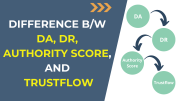Importance of adding XML and HTML Sitemap to Optimize Site Structure
A sitemap is a fundamental part of a website homepage SEO. It is a list of web pages of a website that contains URLs found on a website. These URLs are available to the search engines to navigate through a website and the users to locate the content they searched. The sitemaps are created and submitted to the Google webmasters tool so that Google can crawl the sitemaps. Without sitemaps, the search engines might not show all the web pages as some pages are not discovered by them during their crawling process.
When You Need a Sitemap?
Sitemaps improve the crawling of your website, and Google claims that you need a sitemap when:
- You have a large and responsive website
- You have more web pages and are not linked properly to each other
- You have a new website with few links
- You have a website with rich media content
Having a sitemap to your website, you will benefit with SEO (search engine optimization) and never be penalized by Google.
What are XML and HTML Sitemaps?
XML means Extensible Markup Language whereas HTML is Hyper Text Markup Language. The two markup languages have different uses, value, and service for different purposes on a website to an online user and the search engines.
Created for purpose
HTML sitemaps are created for the online user to view the web pages or online content and navigate the website easily. These Sitemaps organize several pages and sections of your website via hyperlinks. The hyperlinks provide the information of a particular web page to the user when they click on the links. The pages and sections of a website are listed in a specific hierarchy and placed on the homepage of a website.
- Placed on a website's home page and appears on all other pages
- Contains no of URLs of various web pages
- Gives awareness of every web pages on website to the search engines
- Automatically created
- Search engines crawl your website in a better way
- Help SEO of your website
XML sitemaps are created mainly for search engines and are submitted to the webmaster's tool for crawling the website. It organizes several sections of a web page via all the URLs on a website to be indexed by the search engines. The XML sitemaps must be placed in the website’s root directory that can be accessed by the search engine spiders also called robots, bots or crawlers. Search engines crawl or follow links over the Internet, to get the content and add it to search engine for indexing.
The sitemap carries information about each web page, that is created and last modified date, with relevant pages. This speeds up the process of indexing pages by search engines. There are two types of Sitemaps used such as XML sitemap and HTML sitemap. Each sitemap has its uses and features when it comes to SEO and should be employed according to the purpose of a website to get better results.
XML Sitemap provides the following information to search engine spiders-
- Metadata for the URLs
- URLs last updated or modified
- URLs importance
- URLs relation to your website pages
- Frequent changes on your website or web pages
Benefits of using both the Sitemaps:
- Both XML and HTML sitemaps help the search engines to crawl your website and all the web pages.
- HTML sitemap helps visitors to search for a particular content on your website and also makes easier for the search engine for indexing. While XML sitemap informs the search engines about web pages or content on your site for crawling or indexing.
- HTML sitemap doesn't follow any webmasters guidelines as it includes internal links to the pages and URLs. But XML sitemap must be placed on website roots directory by the webmasters or admin.
- Both help SEO of your website by avoiding duplicate data and also attracting more visitors to your website.
- Both make your website content discoverable as XML sitemap informs the search engines and HTML sitemap gets the content for you.
- The XML sitemap is great as it will help Google while crawling and indexing the site into the search engine but HTML sitemaps used to help the visitors to have a better experience.
- Having XML sitemap to your website, you can prioritize the pages for search engines to crawl, and HTML sitemap increases the speed at which search engines see all the pages on your website.
Conclusion
Both HTML sitemaps and XML sitemaps are needed to improve your website’s exposure. The search engine rankings increase after submitting a sitemap to your website for the first time. While sitemaps alone will not drive traffic and conversions, you need navigational links and good content for SEO visibility. Understanding the creation process and value, each type of sitemap will help you prioritize limited resources.





